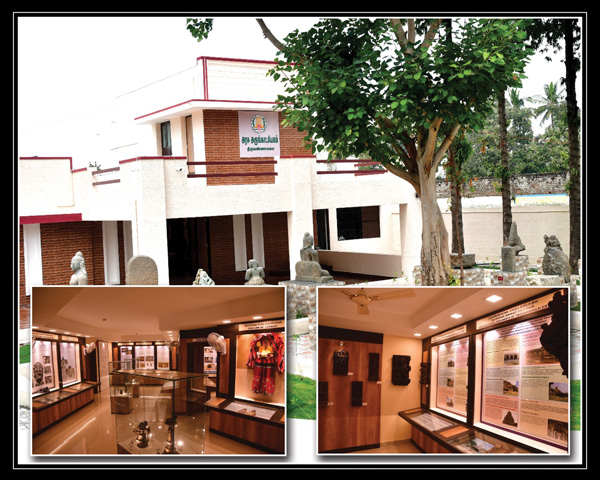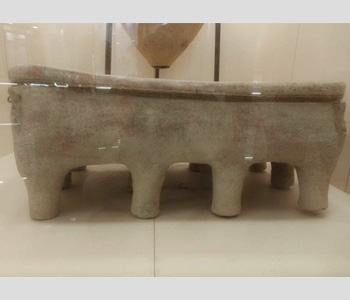Tiruvannamalai

Museum-offers non-formal education, it is a window of Culture, repository centre of Material evidences of the Past, brings the entire Panorama of the culture within its wall as a Bird’s eye view.
Department of Museums, Government of Tamil Nadu are comes under the category of ’’Multipurpose Museums’’.In this series the Government Museum-Tiruvannamalai is 23rd Museum of the state, which starts from the Government Museum, Chennai-1851. Here Galleries have been organized to highlight the Political, Cultural, Literary, Natural, Economical and Industrial History of the district to have a better understanding of the District.
Polity commencing from Sangam age, Pallava, Chola, Pandiya and Vijayanagara rulers have been displayed in the political history Gallery.
Cave temples of the Pallava times, Chola Temples and Gopurams built by the Vijayanagara Period and the Protected Monuments of Archaeological Survey of India and State Archaeological Department are showcases in Cultural History Gallery.
Old Stone age tools, Neolithic Celts and Megalithic Burial Potteries have been displayed and also the artifacts of Arani Jagirdhars, Arani Silk Sari, Soap stone Sculptures of Mudaiyur and Jaderi Namakkatti showcases the Social history of the District.
In Natural history gallery flora and fauna of this District are displayed..Famous Literary Personalities of Tiruvannamalai District and their works have been displayed in the Literary history gallery.
Important economic geology objects and evolution of coinage have been displayed in the Economic History gallery.
Paintings commencing from the Rock art age to the present date are the only way of expression of inner thought of the Human beings. In Paintings gallery Contemporary Paintings have been displayed.
Contact Details :
The Curator,
Government Museum,
314, Ezhil Nagar,
Vengikkal, Polur Road,
Tiruvannamalai - 606 604.
karansaran2014@gmail.com
FEW IMPORTANT EXHIBITS :
© 2026 All Rights Reserved . Government Museum
Designed & Developed by Webtrendz Technologies India Pvt Ltd





